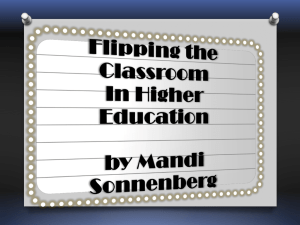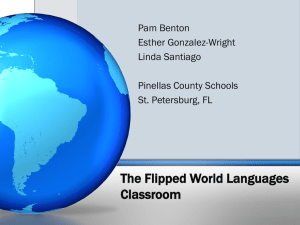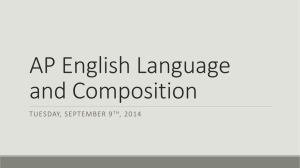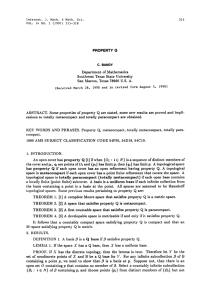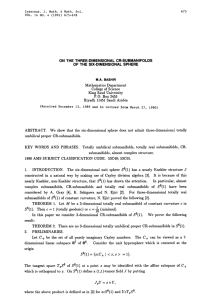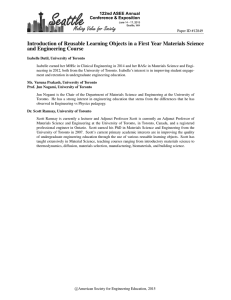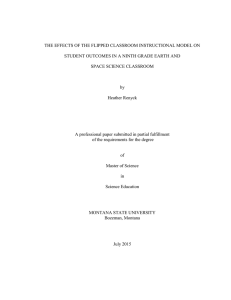Preface - Thomas Jefferson School of Law
advertisement
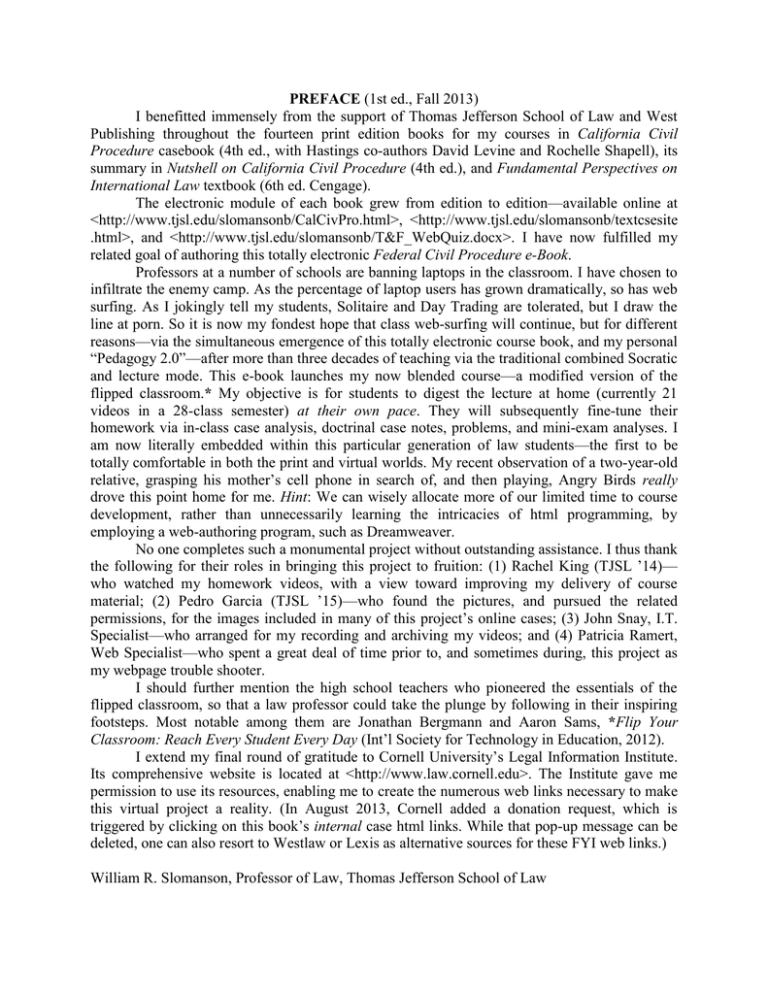
PREFACE (1st ed., Fall 2013) I benefitted immensely from the support of Thomas Jefferson School of Law and West Publishing throughout the fourteen print edition books for my courses in California Civil Procedure casebook (4th ed., with Hastings co-authors David Levine and Rochelle Shapell), its summary in Nutshell on California Civil Procedure (4th ed.), and Fundamental Perspectives on International Law textbook (6th ed. Cengage). The electronic module of each book grew from edition to edition—available online at <http://www.tjsl.edu/slomansonb/CalCivPro.html>, <http://www.tjsl.edu/slomansonb/textcsesite .html>, and <http://www.tjsl.edu/slomansonb/T&F_WebQuiz.docx>. I have now fulfilled my related goal of authoring this totally electronic Federal Civil Procedure e-Book. Professors at a number of schools are banning laptops in the classroom. I have chosen to infiltrate the enemy camp. As the percentage of laptop users has grown dramatically, so has web surfing. As I jokingly tell my students, Solitaire and Day Trading are tolerated, but I draw the line at porn. So it is now my fondest hope that class web-surfing will continue, but for different reasons—via the simultaneous emergence of this totally electronic course book, and my personal “Pedagogy 2.0”—after more than three decades of teaching via the traditional combined Socratic and lecture mode. This e-book launches my now blended course—a modified version of the flipped classroom.* My objective is for students to digest the lecture at home (currently 21 videos in a 28-class semester) at their own pace. They will subsequently fine-tune their homework via in-class case analysis, doctrinal case notes, problems, and mini-exam analyses. I am now literally embedded within this particular generation of law students—the first to be totally comfortable in both the print and virtual worlds. My recent observation of a two-year-old relative, grasping his mother’s cell phone in search of, and then playing, Angry Birds really drove this point home for me. Hint: We can wisely allocate more of our limited time to course development, rather than unnecessarily learning the intricacies of html programming, by employing a web-authoring program, such as Dreamweaver. No one completes such a monumental project without outstanding assistance. I thus thank the following for their roles in bringing this project to fruition: (1) Rachel King (TJSL ’14)— who watched my homework videos, with a view toward improving my delivery of course material; (2) Pedro Garcia (TJSL ’15)—who found the pictures, and pursued the related permissions, for the images included in many of this project’s online cases; (3) John Snay, I.T. Specialist—who arranged for my recording and archiving my videos; and (4) Patricia Ramert, Web Specialist—who spent a great deal of time prior to, and sometimes during, this project as my webpage trouble shooter. I should further mention the high school teachers who pioneered the essentials of the flipped classroom, so that a law professor could take the plunge by following in their inspiring footsteps. Most notable among them are Jonathan Bergmann and Aaron Sams, *Flip Your Classroom: Reach Every Student Every Day (Int’l Society for Technology in Education, 2012). I extend my final round of gratitude to Cornell University’s Legal Information Institute. Its comprehensive website is located at <http://www.law.cornell.edu>. The Institute gave me permission to use its resources, enabling me to create the numerous web links necessary to make this virtual project a reality. (In August 2013, Cornell added a donation request, which is triggered by clicking on this book’s internal case html links. While that pop-up message can be deleted, one can also resort to Westlaw or Lexis as alternative sources for these FYI web links.) William R. Slomanson, Professor of Law, Thomas Jefferson School of Law

